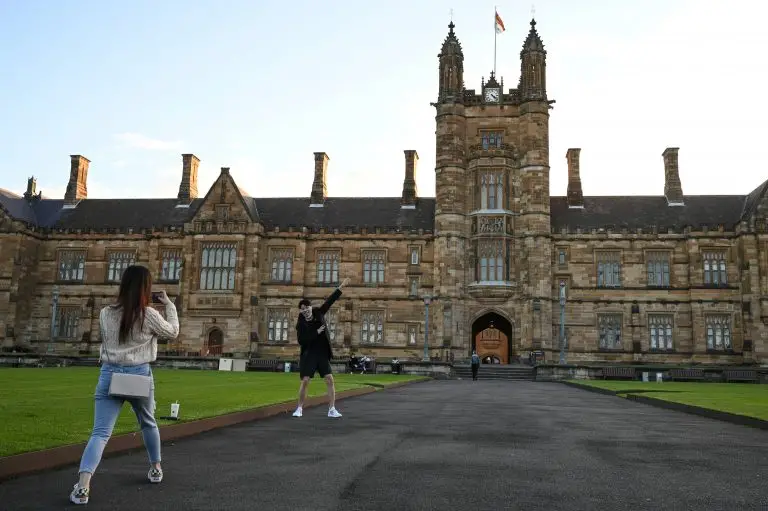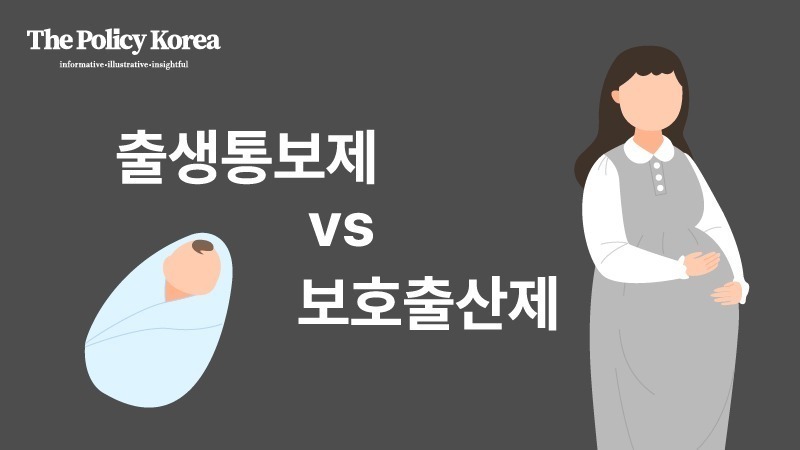[동아시아포럼] 대학 랭킹을 이용한 호주 대학의 ‘유학생 유치 전략’
아시아권 유학생은 호주 대학의 주요한 수입원 팬데믹 이후 신생·지방대학의 유학생 크게 감소 유학생 유치하려면 높은 순위 유지할 필요 있어
[동아시아포럼]은 EAST ASIA FORUM에서 전하는 동아시아 정책 동향을 담았습니다. EAST ASIA FORUM은 오스트레일리아 국립대학교(Australia National University) 크로퍼드 공공정책대학(Crawford School of Public Policy) 산하의 공공정책과 관련된 정치, 경제, 비즈니스, 법률, 안보, 국제관계에 대한 연구·분석 플랫폼입니다. 저희 폴리시코리아(The Policy Korea)와 영어 원문 공개 조건으로 콘텐츠 제휴가 진행 중입니다.
최근 호주 대학들 사이에서 대학평가와 세계 대학 랭킹에 대한 관심이 고조되고 있다. 랭킹이 하락하면 학생 유치에 어려움을 겪게 되고 특히 기관이나 재단의 장학금에 의존하는 아시아권 유학생을 유치하는 데 부정적인 영향을 미칠 가능성이 있기 때문이다. 이에 대학 총장들은 순위 변화를 신중히 살피며 개선 방안을 모색하고 있다.

THE·QS·ARWU 등 랭킹 시스템별로 결과 달라
호주 대학들은 오랜 기간 지속되고 있는 재정 운용의 어려움으로 인해 연구를 비롯한 대학의 주요 기능을 수행하는 데 한계가 있었다. 이를 타개하기 위해 각 대학 총장들은 높은 등록금을 지불하는 유학생을 유치하는 데 주력했고 실제 호주의 연구 중심 대학들은 유학생의 등록금 수입이 재정을 유지하는 데 도움이 됐다. 그러나 코로나19 팬데믹을 기점으로 호주 대학들 사이 양극화가 발생하기 시작했다. 호주의 아이비리그라고 불리는 ‘그룹 오브 에이트(Group of Eight, Go8)’의 연구 중심대학 8곳은 팬데믹 전후로 유학생 수에 큰 변화가 없었던 반면, 신생대학과 지방대학은 유학생 수가 크게 감소했다. 학계에서는 대학의 양극화가 심화하는 상황에서 대학 랭킹이 이러한 경향을 더욱 강화할 것이란 우려가 나오고 있다.
여러 기관에서는 대학평가를 통해 해마다 세계 대학 랭킹을 발표하고 있는데 결과가 서로 배치되는 경우가 많다. 가장 많이 인용되는 THE(Times Higher Education) 세계 대학 랭킹을 보면 올해 Go8 중에서도 3대 명문대로 꼽히는 멜버른대학, 시드니대학, 호주국립대학(ANU) 모두 순위가 전년 대비 소폭 하락했다. 반면 QS(Quacquarelli Symonds) 세계 대학 랭킹에서는 시드니대학과 멜버른대학이 순위가 급등해 상위 20위에 진입한 반면 ANU는 소폭 하락했다. 세 번째로 많이 활용되고 있는 ARWU(Academic Ranking of World Universities)는 아직 2024년 결과를 발표하지 않았지만 2023년 평가를 비교해보면 THE와 QS와는 상당한 차이가 있었다. 멜버른대학은 30점으로 평가된 반면 시드니대학과 ANU는 70점 이상을 부여받았다.
이처럼 주관기관에 따라 평가 결과가 다른 이유는 다양한 지표에 가중치를 반영해 하나의 복합지수를 산출하기 때문이다. 복합지수로 순위를 매기게 되면 대학의 임무와 장·단점, 상황적 맥락 등을 세밀하게 반영하기 어렵다. 더욱이 주관기관은 랭킹이 산출되는 계산식이나 가중치 등 세부사항을 공개하지 않기 때문에 대학 입장에서는 어떤 지표가 어떻게 영향을 미쳤는지를 제대로 파악하기 어렵다. 실제 많은 대학들이 랭킹 시스템에 타당성에 대해 의문을 제기하고 있다. 일부 랭킹 시스템의 경우 STEM(Science, Technology, Engineering, Mathematics) 분야 전공에 편향돼 인문학과 사회과학 전공의 우수성이 평가에 제대로 반영되지 않는 것으로 드러났다. 이에 일각에서는 지나치게 평판 조사에 의존하거나 서구권의 데이터 수집·분석 방식을 활용하고 있는 만큼 식민주의를 답습한다는 비판도 나오고 있다.
데이터 신뢰성에 문제 제기, 일부 대학 불참 선언도
하지만 대학들은 이같은 상황을 자신들에게 유리하게 활용하고 있다. 약점은 감추고 랭킹의 특정 부문만을 강조하면서 마치 전략 게임처럼 랭킹을 이용하는 식이다. 일례로 올해 대학평가에서 호주 수도 캔버라에 소재한 명문대 중 한 곳이 ‘글로벌 지속가능성’ 부문 최상위 등급을 받았는데, 이후 해당 대학은 건물, 버스, 게시판 등에 ‘세계 최고 대학’이라는 대형 광고판을 게시했다. 실제 전체 순위가 아닌 특정 부문에서만 세계 1위를 한 것이란 사실은 의도적으로 숨긴 것이다.
학계 전반에서도 대학 랭킹이 대학에 가하는 압력, 연구 실적을 부풀리기 위해 사용되는 가짜 데이터, 표절 등 연구부정행위, 돈만 받으면 게재해주는 약탈적 학술지(Predatory Journals) 등에 대한 우려가 커지고 있다. 이러한 우려에 대해 주관기관들은 대학이 제출한 데이터를 엄격히 평가한다고 반박했지만 여전히 데이터의 신뢰성에 대한 검증이 필요하다는 지적이 나오고 있다.
논란이 이어지자 최근 중국의 일부 최상위 대학들은 랭킹 시스템에 데이터를 제공하지 않기로 했다. 중국 정부도 더 이상 SSCI(Social Sciences Citation Index) 학술지 게재에 대한 보상을 하지 않고 대신 국내 학술지에 대한 지원을 강화한다는 방침이다. 네덜란드대학협의회(Association of Universities in the Netherlands, VSNU)는 랭킹 시스템의 가중치와 순위 산출 방법에 대해 “임의적인 데다 논란이 있을 수 있다”며 불만을 나타내기도 했다. 실제로 위트레흐트대학(Utrecht University)은 QS 랭킹에 대해 우려를 표했으며 THE의 대학평가에도 참여하지 않고 있다. 미국에서도 많은 대학이 USNWR(US News and World Report)의 대학평가를 보이콧했다. 컬럼비아대학이 대표적이다. 최근 컬럼비아대학의 수학과 교수는 “대학 측이 USNWR에 ‘부정확하고 의심스러우며 매우 오도된 데이터’를 제출했다”고 폭로하며 USNWR의 대학평가에 불참하기로 했다.
美·英 유학생 감소, 영어권 국가의 이점 활용해야
그러나 세계 대학 랭킹은 대학의 중요한 재정 수입원인 유학생들이 진학할 대학을 정하는 데 주요 지표로 활용되고 있다. 특히 중국은 수년 동안 유학생을 가장 많이 배출하는 나라로, 중국인 유학생들 상당수가 랭킹이 높은 대학을 선호하는 것으로 파악됐다. 최근에는 국제사회가 점점 다극화되면서 여러 랭킹 시스템에서 높은 순위를 유지하고 있는 중국과 싱가포르의 대학들이 유학생들에게 매력적으로 받아들여지고 있는 추세다.
즉 호주 대학들도 우수한 연구자와 유학생을 유치하기 위해서는 높은 랭킹을 유지하는 것이 중요하다. 영국대학협의회에 따르면 코로나19 이전인 2018년까지 유학생들이 가장 선호하는 나라는 미국이었으며 그 뒤를 영국과 호주가 이었다. 당시 호주는 빠르게 성장하며 2위인 영국과의 격차를 좁혀 나가고 있었다. 하지만 코로나19 팬데믹과 미·중 갈등으로 인해 미국 정부가 비자 발급 제한 등의 규제를 강화하면서 중국인 유학생 유치에도 부정적인 영향을 미쳤다. 미국과 유사한 외교 기조를 가진 동맹국들의 중국인 유학생도 감소했다. 특히 영국은 전체 박사과정 재학생의 28%를 차지하는 중국인 유학생 수가 크게 감소한 것으로 나타났다.
호주도 스콧 모리슨 정부 시절 외국간섭대책법(foreign interference legislation) 등을 발효하면서 비자 발급 기간이 늘어났고, 이전보다 강력한 무역과 안보 규제가 시행되면서 호주가 아닌 다른 국가로 선택하는 유학생이 증가했다. 다만 그럼에도 불구하고 미국과 영국의 중국인 유학생 감소는 호주 대학들에게 긍정적으로 영향을 미칠 것으로 보인다. 고등교육 시장에서 아시아 국가들의 경쟁력이 계속해서 성장하고 있는 데다 호주는 아시아에서 유일한 영어권 국가기 때문이다. 더욱이 호주는 외교나 안보 측면에서 안전한 국가로 평판이 나 있고, 대학의 교육 서비스 품질도 높은 만큼 이같은 전통적인 이점을 활용해 대학 랭킹에서도 높은 순위를 유지할 수 있을 것으로 보인다.
원문의 저자는 시드니대학교 교육학과의 앤서니 웰치(Anthony Welch) 교수입니다.

Higher education and higher rankings
Rankings fever is in the air. Australian vice-chancellors anxiously scour the latest scores, looking for any improvements. A declining rating may lessen their attractiveness to international students from Asia, upon whom their institutional budgets increasingly depend.

The longstanding underfunding of Australian universities, including research, has driven vice-chancellors to seek out more and more international students, whose higher tuition fees sustain institutional bottom lines, especially for research-intensive universities. The effects of the COVID-19 crisis were felt unevenly across the higher education system. The Group of Eight (Go8) universities were least affected, while newer and regional universities suffered a greater decline in international enrolments. There were concerns that the new round of ratings would only strengthen this trend.
Depending on which rankings scheme is consulted, the findings are either cause for joy or concern. The widely cited Times Higher Education ranking showed that the three leading institutions in the Go8 — the University of Melbourne, the University of Sydney and The Australian National University (ANU) — all declined modestly from 2023.
The QS ranking, showed dramatic rises for the University of Sydney and the University of Melbourne — both shot into the top 20 — but a slight drop for the ANU. The third major ranking scheme, the Academic Ranking of World Universities, has not released its 2024 survey, but its 2023 ratings for the University of Sydney and the ANU differed significantly from that of the other two schemes. Neither the University of Sydney nor the ANU were rated above 70, though the University of Melbourne was rated in the 30s.
Faced with such divergent findings, it becomes challenging to place confidence in their validity. A single number based on a composite index may struggle to accurately reflect the diverse missions, strengths and contexts of universities. The mostly commercial bodies responsible for the rankings do not publish precise details of how rankings are calculated — notably details of their weightings.
Some rankings rely excessively on reputational survey data and tend to be biased towards STEM disciplines and Western data collection systems, diminishing the significance of other methods and humanities and social science disciplines. They have been criticised for perpetuating a form of coloniality.
Rankings encourage forms of game-playing by universities. A large university in one of Australia’s capital cities celebrated a top rating in a global sustainability ranking of universities. Emblazoned on its buildings, buses and billboards, a major advertising exercise promptly announced the university as ‘first in the world’, deliberately omitting the fact that the ranking was restricted to sustainability.
Concerns are growing over not just the games that individual institutions play, but the pressure that rankings exert on academics to lift their research output and forms of corruption — fake data, fake journals and plagiarism — used to boost personal and institutional rankings. Increasingly, there are concerns about the validity of the entire ranking exercise. Claims by ranking organisations that the data submitted by universities is rigorously checked need to be viewed with scepticism.
Several of China’s top ranked universities have recently withdrawn from providing data to the rankers and the government will no longer reward Social Sciences Citation Index (SSCI) journals, preferring leading domestic journals.
The Association of Universities in the Netherlands has signalled its dissatisfaction with ranking methodologies, describing the weighting of attributes as ‘arbitrary and debatable‘. Utrecht University has already withdrawn from the Times Higher Education ranking and voiced concerns about the QS ranking.
In the United States, more universities are withdrawing from the US News and World Report rankings. A mathematics professor at Columbia University recently exposed the institution’s submission of ‘inaccurate, dubious or highly misleading’ data to US News. Columbia University subsequently withdrew from the entire exercise.
Australian universities’ competitiveness in the global quest for academic talent and attractiveness to international students are crucial factors in understanding Australia’s higher education rankings overall. In an increasingly multipolar world, highly reputable universities in China and Singapore are significant magnets for international students.
China’s capacity to enrol US students has been affected by the rancorous relations between the United States and China. Similar rivalrous relations, including visa restrictions and cancellations are also making it difficult for many Chinese students to enrol in US institutions. The United Kingdom has seen a significant decline in PhD student enrolments from China, who constitute 28 per cent of total enrolments at that level.
These developments could conceivably work in Australia’s favour. But lengthy visa delays and blunt and intrusive security measures, such as the foreign interference legislation, introduced by the former Australian prime minister Morrison’s government, are driving some students elsewhere. Overall, despite growing international competition from Asia, Australia’s traditional advantages of being the only major English language system in the region, its reputation as a safe country and quality institutions will continue to stand it in good stead.



























